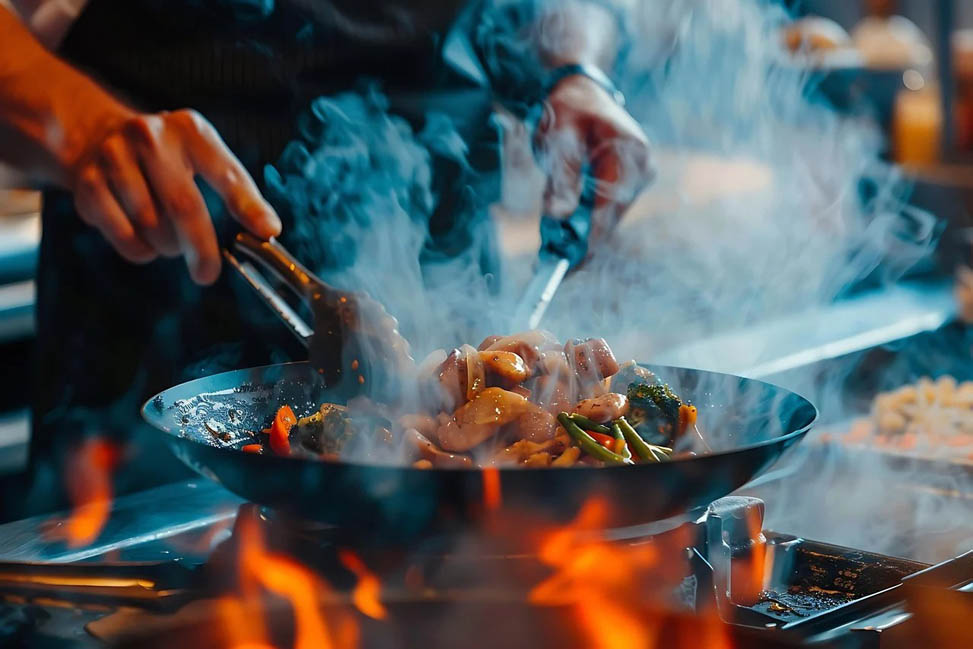Chinese cuisine, one of the oldest and most diverse culinary traditions in the world, spans over 5,000 years of history and has shaped not only China’s food culture but also the global gastronomic landscape. Influenced by the country’s vast geography, rich history, and cultural evolution, Chinese food is renowned for its variety of flavors, textures, and cooking techniques. Far more than just a means of sustenance, it is a reflection of China’s cultural identity, offering a remarkable spectrum of taste experiences. From the bold, fiery dishes of Sichuan to the subtle, refined flavors of Cantonese cuisine, Chinese cooking reveals a deep complexity, achieved through the harmony of ingredients, balanced flavors, and the cultural significance embedded in each dish. Whether savored in bustling street markets or enjoyed at lavish banquet tables, Chinese food is a celebration of tradition, innovation, and culinary artistry.
Chinese Cuisine History
The history of Chinese cuisine is as old and rich as the civilization itself, with roots tracing back over 5,000 years. Early Chinese food culture was shaped by the country’s vast landscapes, regional diversity, and agricultural practices, where rice, wheat, millet, and barley were central staples in different parts of the country. The evolution of Chinese cuisine closely mirrors the rise and fall of various dynasties, each contributing unique ingredients, cooking methods, and culinary innovations.
In ancient times, the Chinese were pioneers in food preservation techniques, such as drying, salting, and fermenting, which helped sustain populations through harsh seasons. The Zhou dynasty (1046–256 BCE) is often credited with laying the foundation for traditional Chinese cooking, with the introduction of the famous “Five Flavors”—sweet, sour, bitter, salty, and umami—essential to Chinese culinary philosophy.
The Tang dynasty (618–907 CE) marked a period of cultural exchange along the Silk Road, which brought new ingredients like spices and fruits from the Middle East and beyond, enriching Chinese cuisine further. The Song dynasty (960–1279 CE) saw the rise of sophisticated cooking techniques and the introduction of detailed culinary texts that highlighted the art of cooking and food presentation.
Throughout the Ming (1368–1644) and Qing (1644–1912) dynasties, Chinese cuisine continued to develop regional variations, influenced by local ingredients and customs. The focus on fresh, seasonal produce, precise techniques like stir-frying and braising, and the pursuit of perfect balance between taste and nutrition became more pronounced.
In the modern era, Chinese cuisine has undergone both preservation and transformation, with traditional practices being integrated with contemporary techniques. The globalization of Chinese food has brought its regional specialties to the world stage, from the spicy dishes of Sichuan to the dim sum of Canton, cementing Chinese cuisine as one of the most influential culinary traditions globally. Through its long history, Chinese cuisine has not only nourished generations but also evolved into an art form that continues to be celebrated around the world.
Chinese Food Culture
Chinese food culture is deeply intertwined with the country’s philosophy and traditions. It goes beyond nourishment, reflecting values of family, unity, and harmony. Meals are often shared communally, with a variety of dishes placed at the center of the table for everyone to enjoy. This way of eating symbolizes togetherness and fosters a sense of connection among family and friends. Food also plays a central role in festivals and celebrations, where certain dishes carry symbolic meanings—such as dumplings for wealth or fish for abundance—emphasizing the cultural importance of food in marking special occasions.
At the heart of Chinese food culture is the principle of balance, both in terms of flavor and nutrition. The ancient philosophy of yin and yang encourages harmony between different tastes—sweet, sour, salty, bitter, and umami—while also considering the health benefits of ingredients. The use of fresh, seasonal ingredients is crucial, as it is believed that eating in tune with the seasons promotes well-being. Food is not just about taste, but also about maintaining balance and supporting overall health, with traditional Chinese medicine influencing culinary practices to nourish both the body and the spirit.
Popular Chinese Cuisines by Region
Chinese cuisine is incredibly diverse, with each region offering its own distinct flavors, ingredients, and cooking methods. The regional styles reflect the unique landscapes, climates, and cultural histories of their areas. Here are some of the most popular Chinese cuisines by region:
Sichuan
Sichuan cuisine is famous for its bold, spicy flavors and the distinctive numbing sensation provided by Sichuan peppercorns. This cuisine uses a variety of chili peppers and aromatic spices, creating a combination of heat, sourness, and richness in many dishes. Sichuan food is known for its complex flavors, often achieved through techniques like stir-frying, braising, and steaming. Signature dishes include Mapo Tofu, a spicy tofu dish in a savory sauce, and Kung Pao Chicken, a stir-fry made with peanuts, chicken, and vegetables in a flavorful, tangy sauce.
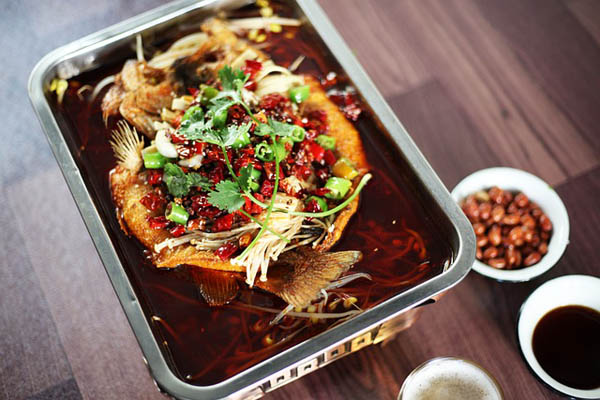
Cantonese
Cantonese cuisine, originating from Guangdong province, is perhaps the most well-known Chinese cuisine globally, especially due to the popularity of dim sum. Characterized by its light, fresh flavors and emphasis on preserving the natural taste of ingredients, Cantonese dishes are often lightly seasoned and delicately prepared. Steaming is a key technique, which enhances the freshness of ingredients. Famous Cantonese dishes include dim sum (bite-sized dumplings and pastries), char siu (barbecued pork), and sweet and sour pork, a dish beloved around the world.\
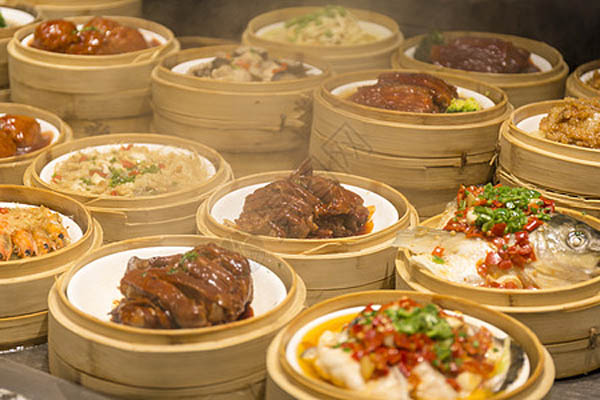
Fujian
Fujian cuisine is known for its emphasis on umami flavors and seafood. The cuisine often incorporates a range of broths, soups, and stews, using fresh fish, shellfish, and other ocean delicacies. Fujian food is also known for its light, delicate taste, with a focus on preserving the natural flavors of ingredients through methods like braising and steaming. One of the most famous dishes from this region is Buddha Jumps Over the Wall, a luxurious soup made with a variety of expensive ingredients, including sea cucumber, shark fin, and ginseng.
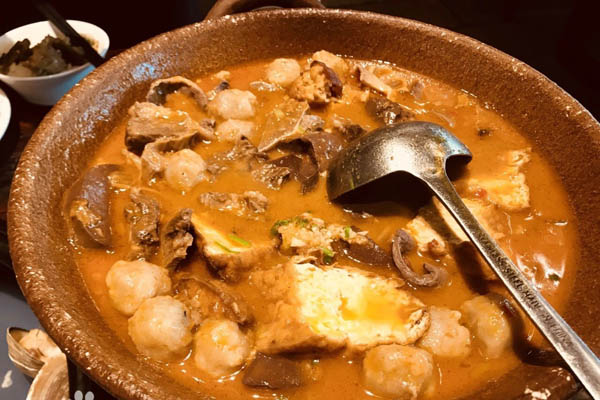
Hunan
Hunan cuisine, like Sichuan, is known for its bold, spicy flavors, but it differs by using fresh chili peppers rather than dried ones. The cuisine emphasizes sourness and heat, often combining ingredients like pickled vegetables, garlic, and chili paste. Hunan food tends to be more pungent and flavorful, with an abundance of chili-infused dishes. Notable dishes include Mao’s Red-Braised Pork, a rich, tender pork dish, and Hunan-style Spicy Fish, which showcases the cuisine’s signature balance of spiciness and sourness.
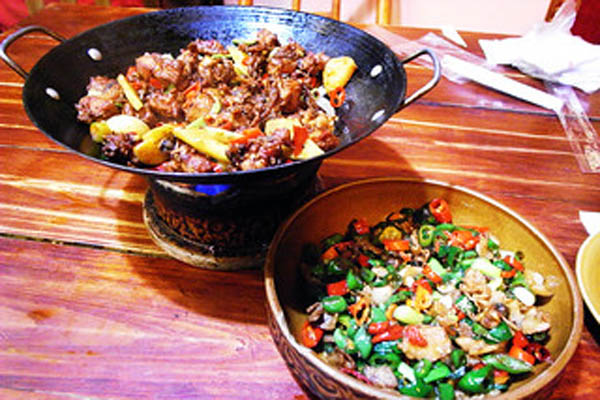
Jiangsu
Jiangsu cuisine is characterized by its emphasis on sweetness, delicate flavors, and sophisticated cooking techniques. Known for dishes that are aesthetically pleasing, Jiangsu food is often meticulously prepared with precise attention to detail. Steaming and braising are common methods, and the use of fresh, seasonal ingredients is a key feature. Famous dishes from Jiangsu include Sweet and Sour Mandarin Fish and Jiangsu-style Braised Pork, where the meat is slow-cooked to tenderness and served with a rich, flavorful sauce.

Shandong
Shandong cuisine, one of the oldest and most influential regional styles in China, is known for its fresh, simple flavors and emphasis on soups and broths. This cuisine is particularly famous for its seafood, with a focus on fish, shellfish, and other oceanic delicacies. The Shandong style places a strong emphasis on umami and salt, using ingredients like soy sauce, vinegar, and garlic to enhance the flavors of the food. Popular dishes include Braised Abalone, Shandong-style Pancakes, and Shandong Soup Dumplings, all of which showcase the cuisine’s deep, savory profiles.
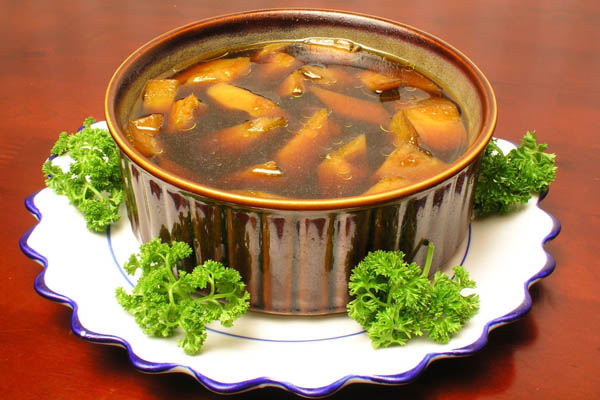
Each of these regional cuisines offers a unique perspective on Chinese cooking, making Chinese food a constantly evolving, multifaceted culinary tradition that spans the length and breadth of the country. Whether you enjoy the spicy heat of Sichuan or the delicate flavors of Cantonese food, there’s a rich variety of tastes to explore in Chinese cuisine.
The Flavor Profiles of Chinese Cuisine
Chinese cuisine is renowned for its complexity and the skillful balance of five primary flavors: sweet, sour, salty, bitter, and umami. Each of these tastes plays a crucial role in creating dishes that are not only flavorful but also nourishing. Sweetness, often derived from sugar, honey, or fruit, is commonly used to balance spiciness or savory elements. For example, in dishes like sweet and sour pork, the sweetness counteracts the tang of vinegar, resulting in a harmonious contrast. Sourness, on the other hand, is typically introduced through vinegar or pickled vegetables, offering a refreshing counterpoint to richer, heavier flavors, as seen in dishes like hot and sour soup.
Salty flavors, achieved through ingredients like soy sauce, fish sauce, or salted vegetables, add depth and complexity to the dish. They often form the base of a dish, with other flavors layered on top. Less commonly, bitter flavors emerge from ingredients like bitter melon or herbs used in medicinal soups, where the bitterness is carefully tempered by sweeter or salty notes. Perhaps most defining in Chinese cuisine is umami, the savory “fifth taste,” which is brought out by ingredients like soy sauce, dried fish, and fermented products. Dishes like Mapo Tofu or Braised Pork Belly are rich in umami, offering deep, satisfying flavors. The ability to balance these diverse tastes—sometimes even within a single dish—sets Chinese cuisine apart, making it a culinary tradition that appeals to both the senses and overall well-being.
Traditional Chinese Food Recipes
Chinese cuisine is filled with iconic dishes that have been passed down through generations, each with its own unique flavors and history. These traditional recipes reflect the diversity and richness of Chinese food culture.
Dumplings
Dumplings (jiaozi) are perhaps the most beloved of all Chinese foods, symbolizing wealth and prosperity, especially during the Chinese New Year. These bite-sized parcels of dough are filled with a variety of ingredients, from pork and cabbage to shrimp and vegetables. Dumplings are typically boiled, steamed, or pan-fried and served with a soy-based dipping sauce. Their crescent shape is said to resemble ancient Chinese gold ingots, making them a symbol of good fortune.
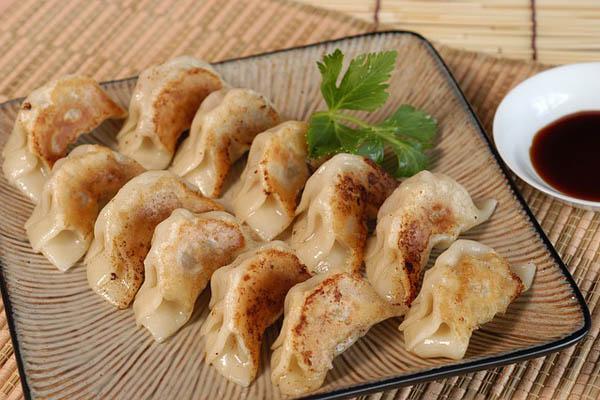
Dan Dan Noodles
Dan Dan Noodles are a signature dish of Sichuan cuisine, known for their bold, spicy flavors. The noodles are served in a savory sauce made from chili oil, Sichuan peppercorns, sesame paste, soy sauce, and ground pork. The dish strikes a perfect balance between heat, umami, and a numbing sensation from the peppercorns, making it a favorite among lovers of spicy food. Often garnished with green onions and pickled vegetables, Dan Dan Noodles offer a delightful combination of textures and flavors.
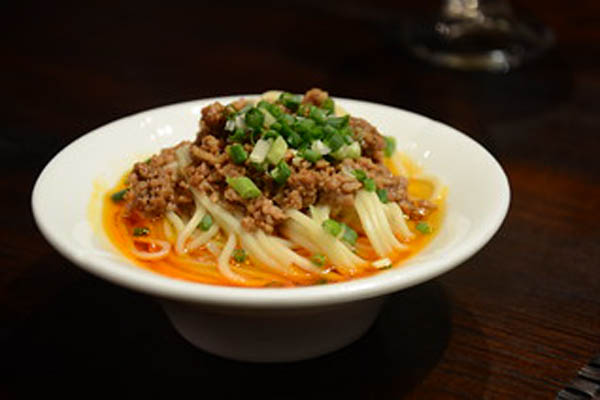
Mapo Tofu
Mapo Tofu is another iconic dish from Sichuan cuisine, known for its rich and spicy profile. The dish features soft tofu in a fiery sauce made with ground pork (or beef), fermented bean paste, soy sauce, garlic, and Sichuan peppercorns. The result is a dish that combines heat, umami, and the characteristic numbing sensation from the peppercorns, all complementing the creamy texture of the tofu. It’s a perfect representation of the bold flavors of Sichuan cuisine.
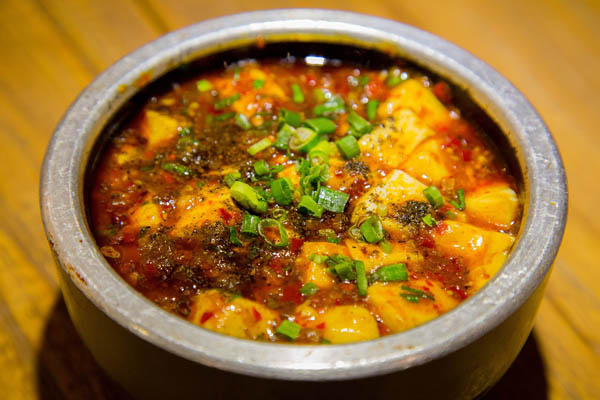
Spring Rolls
Spring Rolls are a popular appetizer or snack, especially during festivals and celebrations. These crispy, golden-brown rolls are filled with a variety of ingredients, such as vegetables, pork, shrimp, or even sweet fillings like red bean paste. The rolls are usually deep-fried to achieve a crispy exterior, and they are often served with a sweet and sour dipping sauce. In Chinese culture, spring rolls symbolize the arrival of spring and new beginnings, making them a favorite during the Lunar New Year.
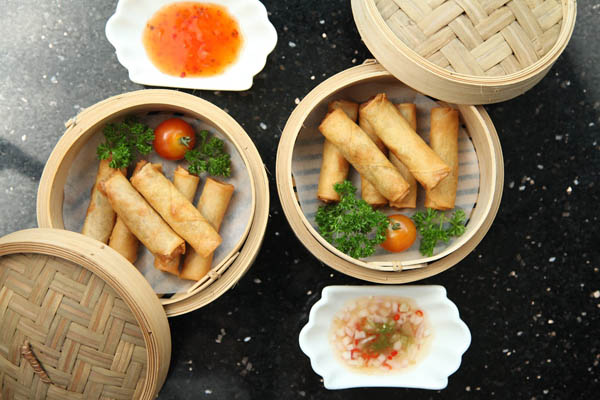
Fried Rice
Fried rice (chao fan) is a quintessential comfort food in Chinese cuisine. Made with leftover rice, fried rice can be customized with a variety of ingredients, such as vegetables, eggs, shrimp, chicken, or pork. The rice is stir-fried in a hot wok with soy sauce, garlic, and green onions, creating a savory and satisfying dish that’s quick to prepare. It’s a versatile dish that can be served on its own or as a side to complement other main dishes.
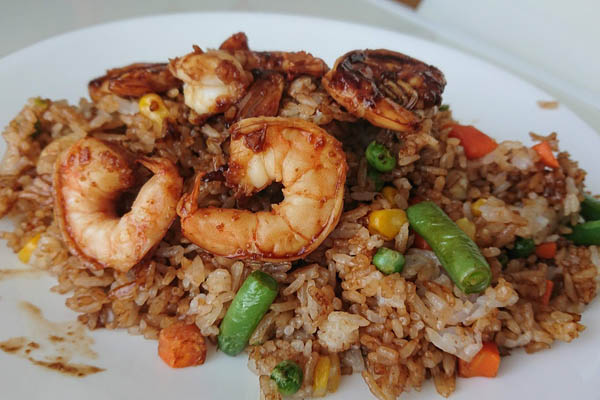
Chow Mein
Chow Mein, meaning “stir-fried noodles,” is a classic dish that originated from Cantonese cuisine but has become widely popular around the world. The dish features egg noodles stir-fried with a combination of meat (often chicken, beef, or shrimp), vegetables, and a savory sauce made from soy sauce, oyster sauce, and a touch of sesame oil. The noodles are typically crispy on the outside but tender on the inside, providing a delightful contrast in texture. Chow Mein is often served as a main dish and is a staple at Chinese restaurants globally.
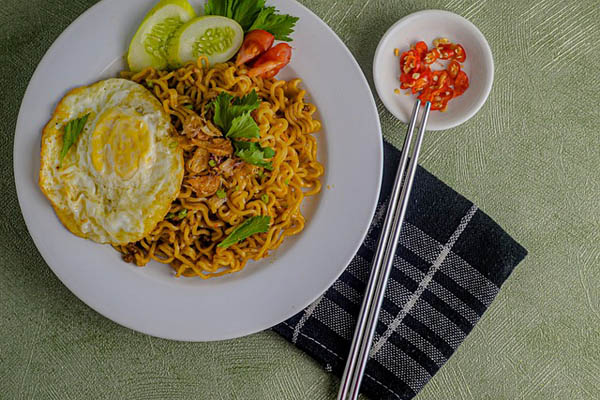
These traditional Chinese dishes are just a glimpse into the richness of Chinese food culture, offering a variety of textures, flavors, and cooking methods that have been refined over centuries. Each dish carries with it not just a unique taste but also a connection to history, tradition, and the artistry of Chinese cooking.
Chinese cuisine offers a rich and diverse tapestry of flavors, textures, and traditions that have evolved over thousands of years. From the bold, spicy dishes of Sichuan to the delicate, balanced flavors of Cantonese cuisine, each region brings its own unique ingredients and cooking techniques to the table. The timeless appeal of traditional dishes like dumplings, Mapo Tofu, and fried rice showcases not only the artistry behind Chinese cooking but also the cultural significance that food holds in Chinese society.
Whether you’re a seasoned chef or a curious food lover, exploring Chinese cuisine is an endless journey of discovery. Every meal, every dish, tells a story, connecting you to China’s vast history and culinary heritage. With its incredible variety and depth, Chinese food remains one of the most beloved and influential cuisines in the world, offering something new and exciting with every bite.

